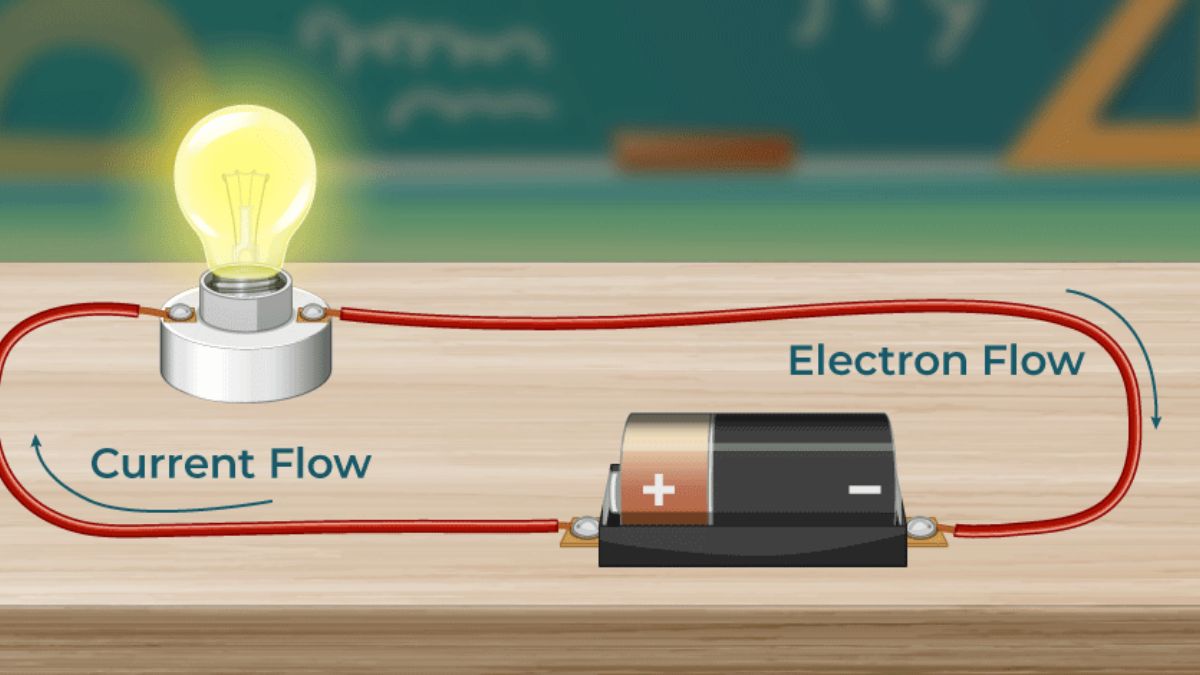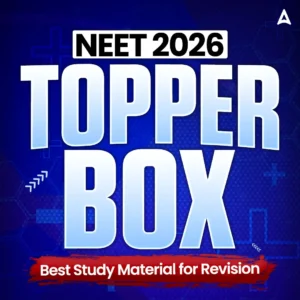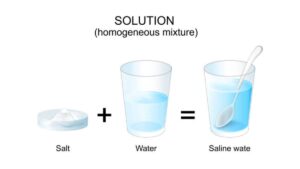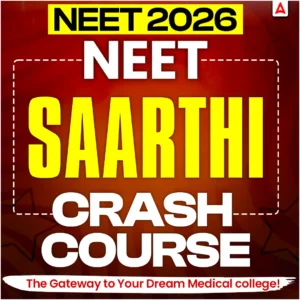The National Eligibility cum Entrance Test conducted by the National Testing Agency is a national level entrance examination conducted annually to test student’s eligibility for admission into various medical courses like MBBS and BDS. The NEET 2026 Exam will test students with 3 subjects, i.e., Physics, Chemistry and Biology.
Physics is a crucial component of the exam, and the Current Electricity chapter from Class 12 is particularly significant. It typically accounts for 3-5 questions, making it a high-scoring unit if you have a strong grasp of the concepts. This article provides a comprehensive guide to mastering this chapter through multiple-choice questions (MCQs), covering key concepts, common question types, and essential formulas.
NEET Physics MCQs for Current Electricity Chapter
Current Electricity is one of the most important chapters in the NEET Physics syllabus, carrying a significant weightage in the exam. It is a scoring topic because the concepts are straightforward and most questions are formula-based. Mastering this chapter can help boost your overall Physics score.
A Current Electricity chapter focuses on the flow of electric charge (current) through conductors, introducing concepts like electric current (I=Q/t) and its unit (Ampere), the difference between direct and alternating current (DC/AC), Ohm’s law (V=IR) that relates voltage, current, and resistance, and the behavior of electrical circuits including series and parallel combinations. It also covers electrical power, the heating effect of current, and the application of Kirchhoff’s rules for analyzing complex circuits.
Key Topics Covered in Current Electricity for NEET
The Current Electricity Chapter in the NEET Physics Syllabus 2026 is a very important chapter that aspirants need to study in order to complete their preparations for the exam. Scroll down in the article to check key topics covered in Current Electricity for NEET:
- Electric Current and Drift Velocity
- Relation between current and drift velocity
- Mobility of charge carriers
- Current density
- Ohm’s Law and Resistance
- Factors affecting resistance (length, area, material, temperature)
- Specific resistance and conductivity
- Series and parallel combination of resistors
- Electromotive Force (EMF) and Internal Resistance
- Cells in series and parallel
- Mixed grouping of cells
- Terminal voltage
- Kirchhoff’s Laws
- Kirchhoff’s Current Law (KCL)
- Kirchhoff’s Voltage Law (KVL)
- Application in solving complex circuits
- Electrical Measuring Instruments
- Galvanometer, Ammeter, Voltmeter
- Conversion of galvanometer into ammeter and voltmeter
- Wheatstone Bridge and Meter Bridge
- Principle of Wheatstone bridge
- Conditions for balance
- Practical applications
- Potentiometer
- Principle of potentiometer
- Comparison of EMFs
- Measurement of internal resistance of a cell
Importance of Solving NEET Physics MCQs for Current Electricity Chapter
Regularly practicing Current Electricity MCQs is one of the smartest strategies for NEET preparation. Here’s why it matters:
- Strengthens Core Concepts: Solving MCQs ensures a deeper understanding of Ohm’s Law, resistor combinations, and circuit behavior.
- Enhances Speed & Accuracy: Consistent practice helps you apply formulas faster and avoid common calculation errors during the exam.
- Focuses on Exam-Relevant Topics: Most NEET questions are derived from standard concepts, and derivation practice helps you spot these patterns.
- Develops Logical Thinking: Application-based questions on Kirchhoff’s laws, Wheatstone bridge, and potentiometer improve analytical and problem-solving skills.
- Secures Easy Marks: This chapter contributes 2–3 direct questions in NEET every year, making it a high-scoring topic with minimal effort.
NEET Physics MCQs for Current Electricity Chapter
The aspirants who are looking forward to appear for the NEET Exam must start preparing for the exam by solving more and more Current Electricity MCQs as listed below:
Q1. The resistance of a wire is R. If its length is doubled and cross-sectional area is halved, its new resistance will be:
a) R
b) 2R
c) 4R
d) 8R
Answer: (d) 8R
Q2. Two resistors of 6 Ω and 12 Ω are connected in parallel. The equivalent resistance is:
a) 18 Ω
b) 4 Ω
c) 2 Ω
d) 8 Ω
Answer: (b) 4 Ω
Q3. A cell of EMF 1.5 V and internal resistance 1 Ω is connected to an external resistance of 4 Ω. The current flowing through the circuit is:
a) 0.3 A
b) 0.25 A
c) 0.5 A
d) 1.0 A
Answer: (c) 0.3 A
Q4. The sensitivity of a potentiometer can be increased by:
a) Increasing potential gradient
b) Decreasing length of wire
c) Increasing length of wire
d) Using thicker wire
Answer: (c) Increasing length of wire
Q5. The null point in a meter bridge shifts towards the cell of smaller emf. This is due to:
a) Higher resistance in that arm
b) Lower resistance in that arm
c) Temperature effect
d) Internal resistance of the cell
Answer: (d) Internal resistance of the cell
Q6: The electric power consumed by a device can be calculated using the formula:
a) P = V / I
b) P = I^2 * R
c) P = V * I
d) P = R / I^2
Answer: (c) P = V * I
Q7: The total resistance of two resistors connected in series is:
a) Equal to the sum of their resistances
b) Equal to the product of their resistances
c) Equal to the reciprocal of the sum of their resistances
d) Equal to the reciprocal of the product of their resistances
Answer: (a) Equal to the sum of their resistances
Q8: When resistors are connected in parallel, the total resistance:
a) Is equal to the sum of their resistances
b) Is equal to the product of their resistances
c) Can be calculated using the formula R_total = 1 / (1/R₁ + 1/R₂)
d) Is always larger than the resistance of any individual resistor
Answer: (c) Can be calculated using the formula R_total = 1 / (1/R₁ + 1/R₂)
Q9: The SI unit of electric charge is:
a) Volt
b) Ampere
c) Coulomb
d) Ohm
Answer: (c) Coulomb
Q10: Ohm’s law is not applicable to:
a) Conductors
b) Semiconductors
c) Superconductors
d) Insulators
Answer: (c) Superconductors
Year Wise NEET Physics MCQs for Current Electricity Chapter
In the table listed below, we have added the year wise NEET Physics MCQs for Current Electricity Chapter so that all the students can start preparing accordingly. Click on the links below:
| Year Wise NEET Physics MCQs for Current Electricity Chapter | |
| Year | Links |
| 2014 | Click Here |
| 2015 | Click Here |
| 2016 | Click Here |
| 2017 | Click Here |
| 2018 | Click Here |
| NEET Physics Chapters | MCQ Link |
|---|---|
| Physics and Measurement | Click Here |
| Kinematics | Click Here |
| Laws of Motion | Click Here |
| Work, Energy, and Power | Click Here |
| Rotational Motion | Click Here |
| Gravitation | Click Here |
| Properties of Solids and Liquids | Click Here |
| Thermodynamics | Click Here |
| Kinetic Theory of Gases | Click Here |
| Oscillation and Waves | Click Here |
| Electrostatics | Click Here |
| Current Electricity | Click Here |
| Magnetic Effects of Current and Magnetism | Click Here |
| Electromagnetic Induction and Alternating Currents | Click Here |










 NEET Preparation Strategy 2026: Detailed...
NEET Preparation Strategy 2026: Detailed...
 Free NEET Sample Papers 2026 PDF | Downl...
Free NEET Sample Papers 2026 PDF | Downl...
 Salt Analysis NEET Notes, Check Importan...
Salt Analysis NEET Notes, Check Importan...








